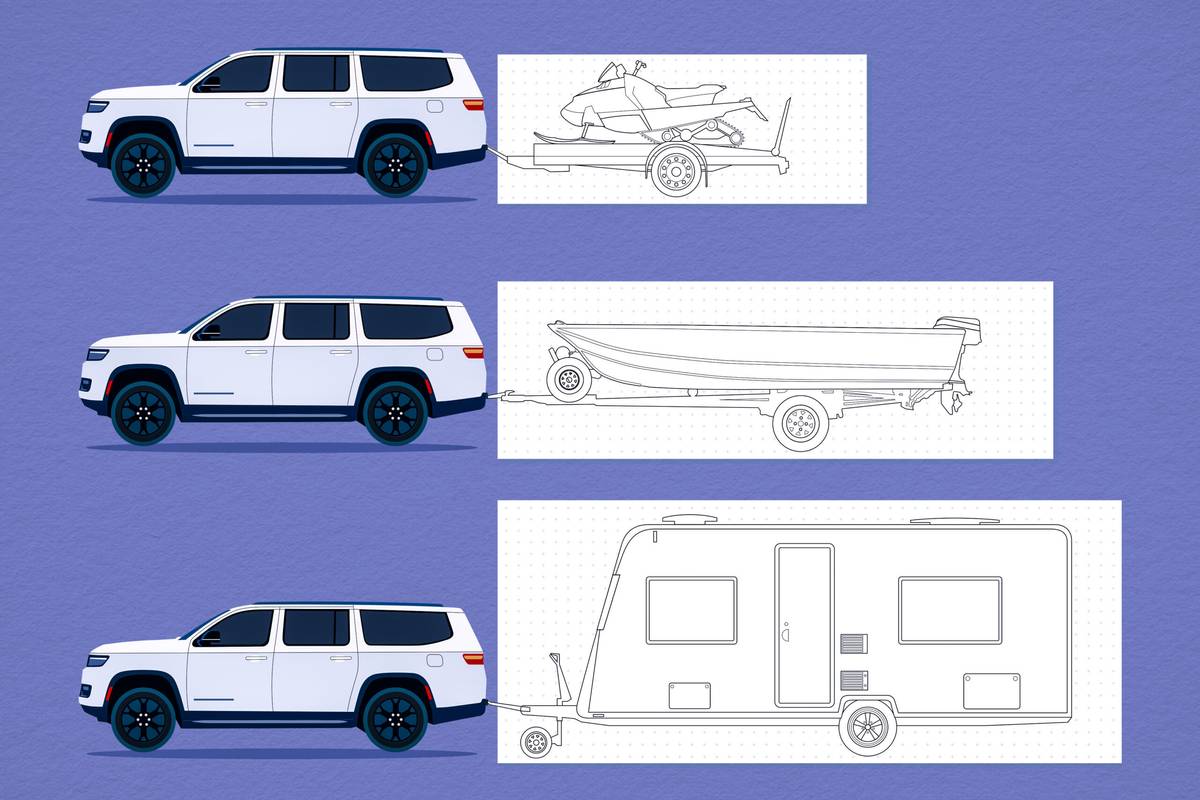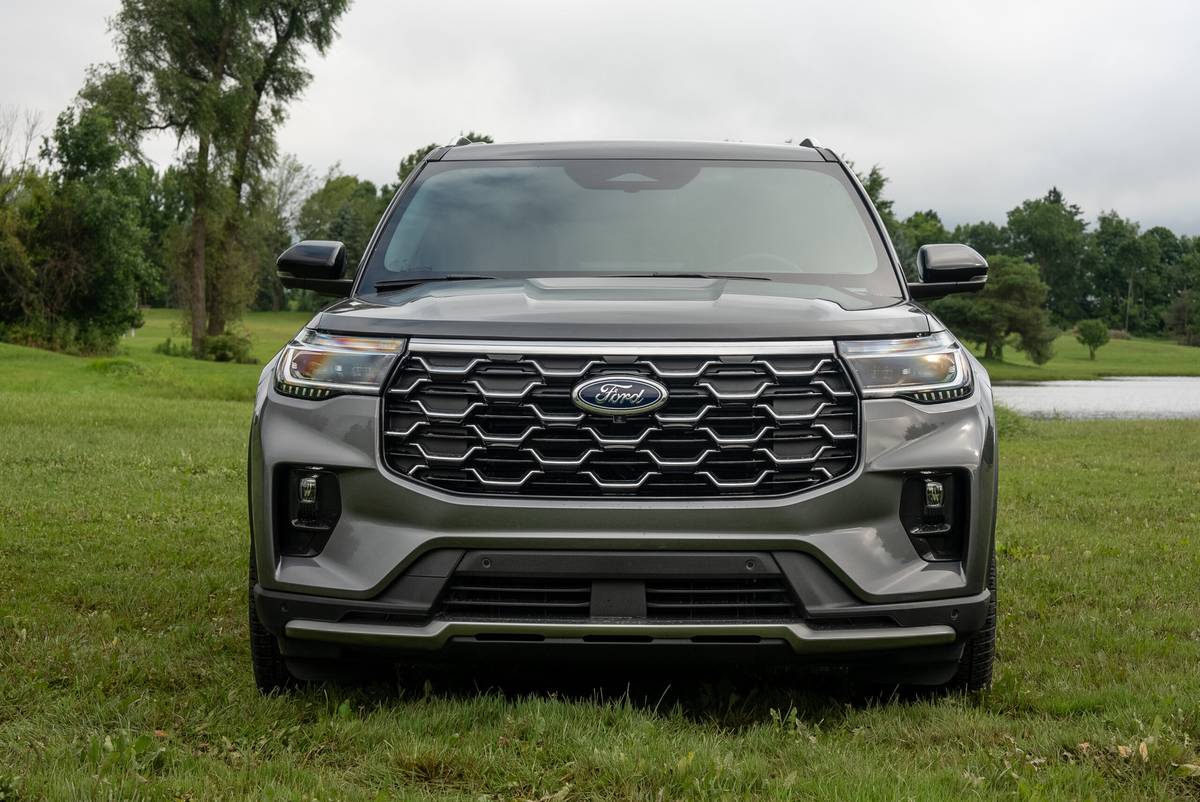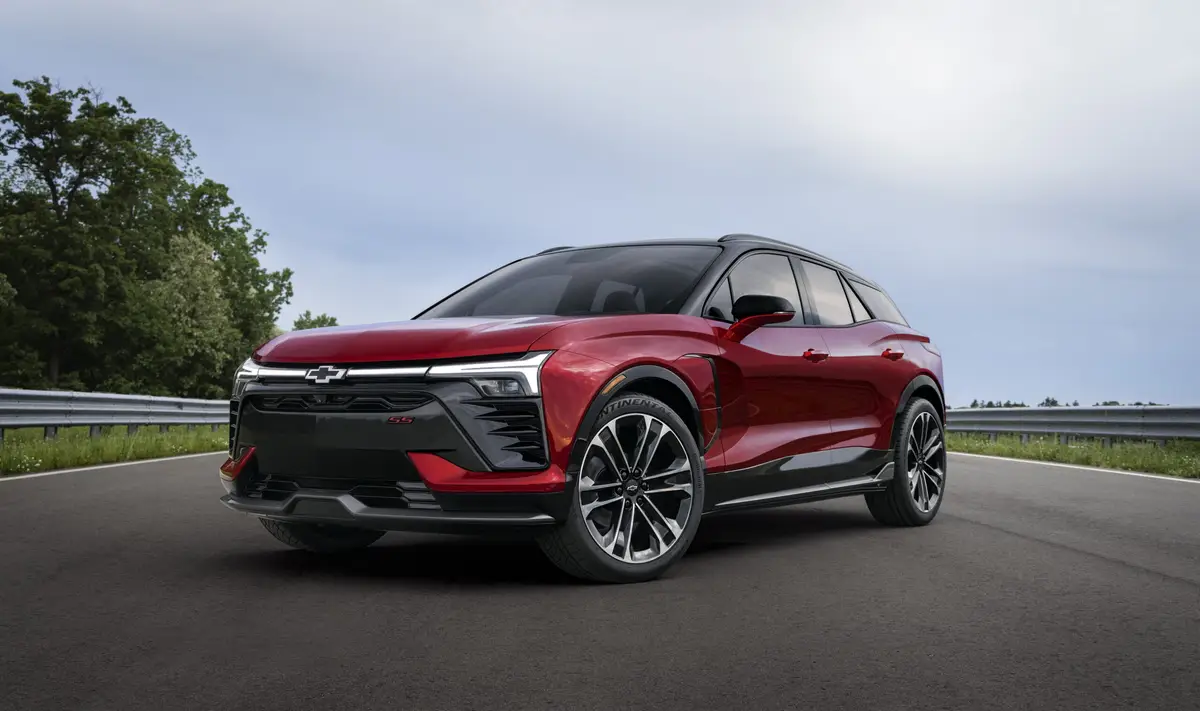2008 GMC Sierra 1500: What's New
Vehicle Overview
Redesigned for 2007, the GMC Sierra full-size pickup was restyled, inside and out, and boasted roomier cabins, greater maximum towing capacity and higher gas mileage. GMC says ride, handling and interior noise levels were also improved.
As before, the Sierra shares a platform with the Yukon and Yukon XL full-size SUVs. The varieties are overwhelming: regular, extended and Crew Cab body styles; short, standard and long cargo box lengths; multiple powertrain combinations; and multiple suspension packages and trim levels. Of course there’s also rear- or four-wheel drive.
For 2008, XM Satellite Radio is now standard, and light-duty Sierras get a trailer brake controller that aids drivers when towing. Twenty-two-inch rims are available from GMC dealers, and a new All Terrain trim level features skid plates, 18-inch chrome wheels, Rancho shocks, a chrome grille and trim, special badges and unique gauges. Heavy-duty dualie trucks now have 17-inch wheels.
Despite a concerted effort by General Motors to differentiate the Sierra more than ever from the Chevrolet Silverado, its sister model, they succeed only to a point. Competitors include the Dodge Ram, Ford F-150, Nissan Titan and Toyota Tundra.
(Skip to details on the: 2500HD, 3500HD)
Exterior
The Sierra’s exterior styling changed with its 2007 redesign. It’s different and modernized, and though it has different hood and fender shapes, it still isn’t wildly different from the Silverado. Its headlights are stacked vertically, like the Silverado’s, but the Sierra’s are more squat. A taller bumper rests immediately under them. Where the Silverado’s disproportionately large grille is chrome-heavy, it’s dark and only rimmed with chrome in most of the Sierra trims. The Denali model retains its signature perforated chrome plate grille.
On both models, the windshield is more swept back, yet the nose is taller and more squared off. The end result is better aerodynamics, which plays a part in the improved fuel economy.
The official trim levels are WT (work truck), SLE1, SLE2, SLT and Denali, the wheels of which range from 17 to 22 inches in diameter. The Denali’s standard 18s and optional 20s are unique to the trim level.
The cargo bed lengths are 5 feet 8 inches, 6 feet 6 inches and 8 feet. Not all lengths are available with all cab styles and powertrains, though.
Interior
This new Sierra generation has markedly improved interior quality, with less-plasticky plastics and lower shine. The WT and SLE trim levels have an interior design all their own, with a different dashboard and larger controls and handles (for easier operation with gloved hands, GMC says). Storage capacity has grown thanks to a double glove compartment and even-larger center storage consoles. The SLE1 has a 40/20/40-split front seat. Not really a bench, this configuration is like two bucket seats with a small seat between them that converts into a center armrest/console. It has a lockable bin in the center seat and another in its backrest/armrest. Leather is optional on the SLE trims, with a six-way power driver’s seat added in the SLE2.
The higher trim levels get a different interior layout borrowed from the Yukon SUV, intended more for personal pickup users than for workers. In addition to the different dashboard, door panels and trim, the SLT adds heated leather seats with 12-way power adjustment for the driver, a six-CD changer with Bose speakers and heated windshield washers.
The Denali has exclusive leather and trim and a unique steering wheel and center console, as well as power adjustment for the passenger seat. Adjustable pedals, an auto-dimming rearview mirror, dual-zone climate control, remote starting, rain-sensing windshield wipers and sonar rear parking assist are some of the Denali’s standard equipment.
In addition to added front-seat legroom, headroom and hip room, GMC made the interiors seem roomier by moving the dashboards down and forward a few inches. GMC says the rear seats are more supportive and offer more legroom in both extended and Crew Cabs. The crews have split rear seats that raise to provide more storage space. They’re optional in extended cabs, which now have Nissan Titan-style access doors, which open 170 degrees. They also have power windows in the higher trim levels.
Under the Hood
There are 4.3-liter V-6 and 4.8-, 5.3- and 6.0-liter V-8 engines paired with a four-speed automatic transmission, but the Denali gets a 6.2-liter V-8 mated to a six-speed automatic — a combination available elsewhere only on the Cadillac Escalade. It generates 403 horsepower; the 6.0-liter tops out at 367 hp. The transmission includes a sequential manual mode that lets the driver shift up and down by means of a switch on the column shifter.
The 5.3-liter engine includes fuel-saving cylinder-deactivation technology and is flex-fuel — capable of running on E85 ethanol and/or gasoline. The 6.0-liter engine grants the maximum capacity of 10,500-pound trailer weight.
This capability also requires one of five suspension choices, called NHT. The other four Z-based suspension names (like Z71) are for a smooth ride, enhanced (but not maximum) trailer towing and handling, offroad capability and street performance.
GMC has moved toward more-refined systems that have been finding their way into SUVs and other trucks: Coil springs have replaced torsion bars in the front suspension, and the recirculating-ball steering has given way to the lighter, simpler and more precise rack-and-pinion design. The Denali has skid plates and tow hooks as standard equipment.
Safety
Antilock brakes are standard on all models. The StabiliTrak electronic stability system is standard on Crew Cabs. In addition to the required airbag complement, side curtain airbags are optional for all three body styles. They deploy along all the side windows in the event of a side impact or a rollover. GMC says the front seat belt pretensioners are designed to cinch the belts in both front and rear collisions in an attempt to prevent occupants from flopping around and being injured.
The Sierra comes with OnStar, with the first year of Safe & Sound service free. This plan includes automatic OnStar notification in the event of a collision, stolen vehicle tracking and remote door unlocking should you lock your keys in the car.
2500HD
The standard engine is a 6.0-liter V-8 that produces 353 hp and 373 pounds-feet of torque. A 6.6-liter turbo-diesel is optional; it makes 365 hp and 660 pounds-feet of torque. Both engines are mated to a six-speed automatic transmission.
The trucks are offered in regular, extended and crew cab configurations, with two cargo box lengths. GM says it has redesigned the tailgate to lessen its mass and make it easier to use and remove.
Both the interior and exterior have been redesigned to make HD versions look different from their milder cousins. Differences include larger door-pull handles, plus a new grille, hood and front fenders. Back to top
3500HD
The standard engine is a 6.0-liter V-8 that produces a maximum of 353 hp and 373 pounds-feet of torque. A 6.6-liter turbo-diesel is optional; it makes 365 hp and 660 pounds-feet of torque. Both engines are mated to a six-speed automatic transmission.
Dual rear wheels and an 8-foot cargo box are available on 3500 models. The trucks are offered in regular, extended and crew cab configurations. GM says it has redesigned the tailgate to lessen its mass and make it easier to use and remove.
Both the interior and exterior have been redesigned to make HD trucks look different from their milder cousins. Differences include larger door-pull handles, plus a new grille, hood and front fenders. Back to top
Featured stories



